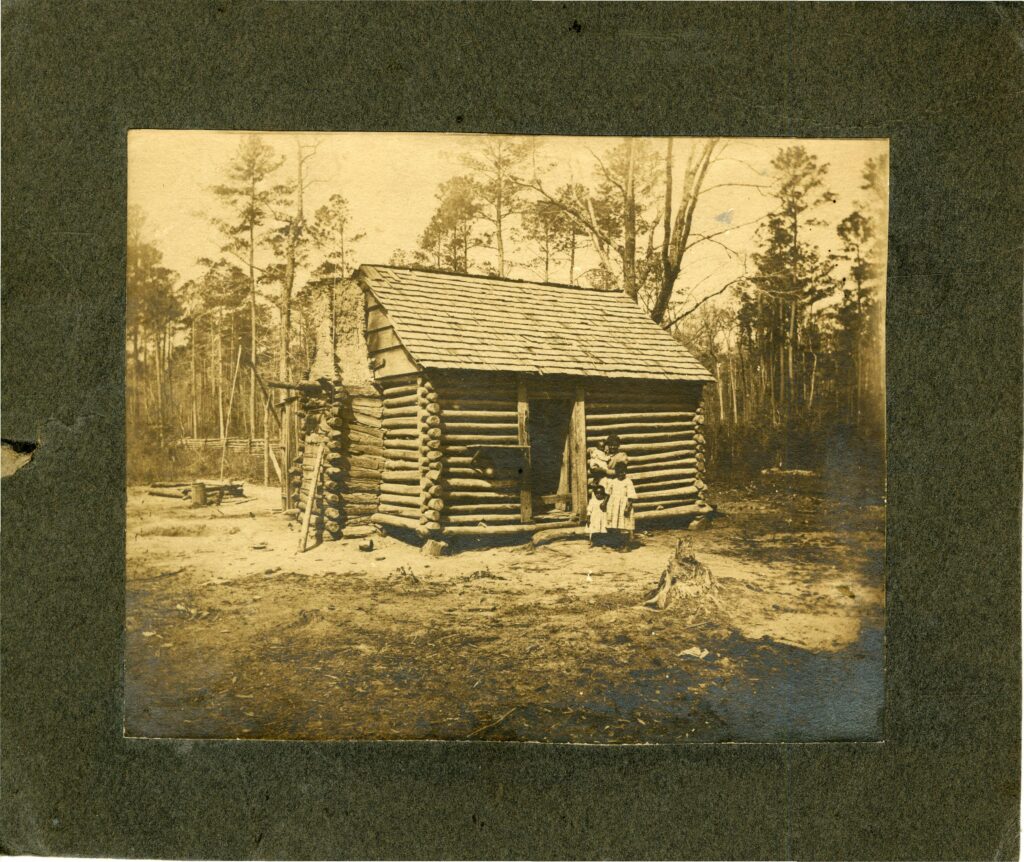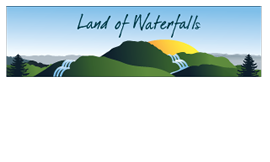
History can sometimes be difficult to pin down, with contradictory sources. Previous research did not indicate that enslaved people were present on the land that would become Everett Farm; new information shows the possibility that a small population of enslaved people had been on that land during the years when the property was owned by a Charleston rice plantation owner. William Ward is listed in many sources as the one who owned the “Lowndes House” that stood on what is now known as the Everett Farm property. Published Transylvania County 1860 slave schedules do not show a William Ward as a slave owner in Transylvania County. However, one outlying source, a Transylvania Times article from the mid-1920s, gives the name Joshua Ward as the owner of Lowndes House. This is a departure from all other sources but could indicate that enslaved people were present on the land.
Joshua Ward is indeed listed on the Transylvania County 1860 slave schedules as the owner of 18 slaves. To put enslavement for the area into perspective, at that time in history 70 households enslaved a total of 414 people in Transylvania County. The greatest number of enslaved people in the county were the 37 enslaved by Francis Johnstone. To understand Joshua Ward’s role in slavery, it is necessary to depart from the boundaries of Transylvania County that usually enclose the scope of the “Picturing the Past” column and look to Charleston, S.C.
Joshua Ward was from a long line of Wards in the vicinity of Charleston, S.C. The 1860 slave schedules for Charleston show that he owned several rice plantations in the Lower All Saints region of Georgetown, S.C. with a total of 1,128 enslaved people living on them. The properties included Prospect House, Alderly Place, Springfield, Longwood, and Brookgreen Place, which was the family home. Joshua inherited these properties and the enslaved people associated with them from his father Joshua John Ward who during his lifetime enslaved the largest number of people in America and was known as “The King of the Rice Planters.” Joshua Ward’s wealth undeniably came from slave labor on these rice plantations in the low country of South Carolina. Based on social customs of the time, it is likely that the 18 enslaved people that were listed as part of the Transylvania County property were brought from Charleston during times when Joshua Ward and family wanted to visit his mountain residence that would assist them with the running of a household during their time away from home. The number of enslaved people that were on that size of property would not have been enough for agriculture, and there is no indication that agriculture was part of the land use for that property until the gladiolus farms of the mid-20th century. No plantations existed in Transylvania County at all, since the land and climate are not suited for that type of agriculture.
Another new discovery is a photo donated to the NC Room archives that had been tentatively identified as “Everett Farm slave house.” At first glance, this would seem to confirm the presence of enslaved people on that property. There are some credibility issues, however, that do not make this a reliable piece of evidence. Sylvester Everett, who was the namesake of the farm, did not own the property at a time when slave ownership would have been possible. There is no indication that Sylvester Everett or any of his descendants owned slaves either, as they originated from Chicago and built their wealth through investing. What brings this identification further into question is that the photo itself does not have this identification written on the back. It is a label that only became connected to the digital version of the photograph after the image was scanned, and it is not known who labeled it. The fact that the photograph has been identified as “Everett Farm slave house,” the modern name for the property, implies that whoever labeled it was from a much later time than when the photo was taken; therefore, they may not have had enough knowledge to correctly identify the people and building in the scene. It is all too easy for someone from a later era to make assumptions about images they see from the past that cannot be confirmed. History research often leaves more questions than answers. Were the people in this image enslaved on the land that would later become Everett Farm? Perhaps. But it just cannot be confirmed, based on these credibility issues.
There are records to show how the Civil War impacted Joshua Ward. He had been a Captain for the Confederacy with many enslaved people that had been enumerated as part of his assets. It appears that during the Civil War, the property that would one day become Everett Farm was put up for collateral and later sold to settle Confederate war debts. Ward applied for and received a presidential pardon from Andrew Johnson that included an agreement to never own slaves or use slave labor again. There is also a copy of the contract between Ward and the people enslaved on his Charleston rice plantations that defined the terms for their employment as newly freed persons. For many of the formerly enslaved, they did not have the resources to move anywhere else, so they often ended up as workers for the very people who had once enslaved them. There is no indication that any of the 18 people based in Transylvania who were enslaved by Ward stayed in this area. This is likely because their connections were in Charleston, S.C., not here in the mountains of North Carolina. Joshua Ward himself passed away in 1867, only two years after the conclusion of the Civil War at the age of 39, one week before his 40th birthday. In modern times, Ward’s properties Brookgreen, Springfield, and other landowners’ surrounding properties have been consolidated into a nature preserve.
During the lengthy research process, another more positive and confirmed story of African Americans on the Everett Farm emerged. Randall Everett, son of Sylvester, took on management of the family property and approached the county Board of Education (BOE) in May 1921 about his wish to donate some of his land for a “colored school.” Based on records from the BOE, Randall donated a piece of his land and $100 (equivalent to about $1,700 today) in order to help fund the construction of the school that became known as the Everett School. These same records indicate that the insured value of the building was $700, so his contribution was a large part of what made the construction of the school possible.
Previously, Glade Creek School was the closest school for Black children to the Everett farm; Glade Creek School was on the other side of the French Broad River without easy bridge access at that time meant that it was quite a journey each day for the students to engage in their studies. Randall Everett ensured that the Everett School would be built to serve the 24 children that were in that area of the county with his donation of land and money. Everett School was a one-room, one-teacher schoolhouse. Unfortunately, there are no known photographs of the Everett School. The first teacher was Anna Gash, with Ethel K. Mills, Wilkie Johnstone, and Eleanor Burton following. The school was in service until 1937 when it was closed due to low attendance and was subsequently sold by the BOE. These incredible educators are part of a larger story of education in the Rosenwald community in Transylvania that helped to advance the goals of Black Transylvanians.
Photographs and information for this column are provided by the Rowell Bosse North Carolina Room, Transylvania County Library. This article was written by Local History Librarian Laura Sperry. Sources available upon request. For more information, comments, or suggestions, contact NC Room staff at [email protected] or 828-884-1820.



